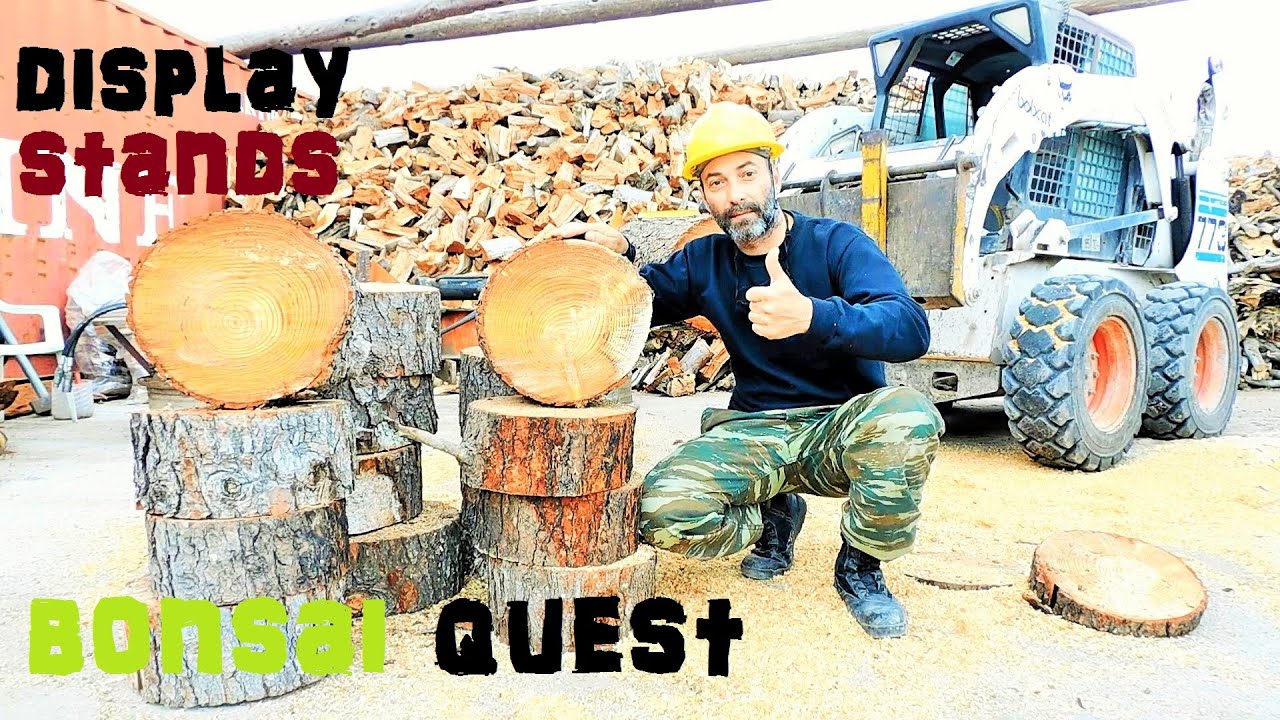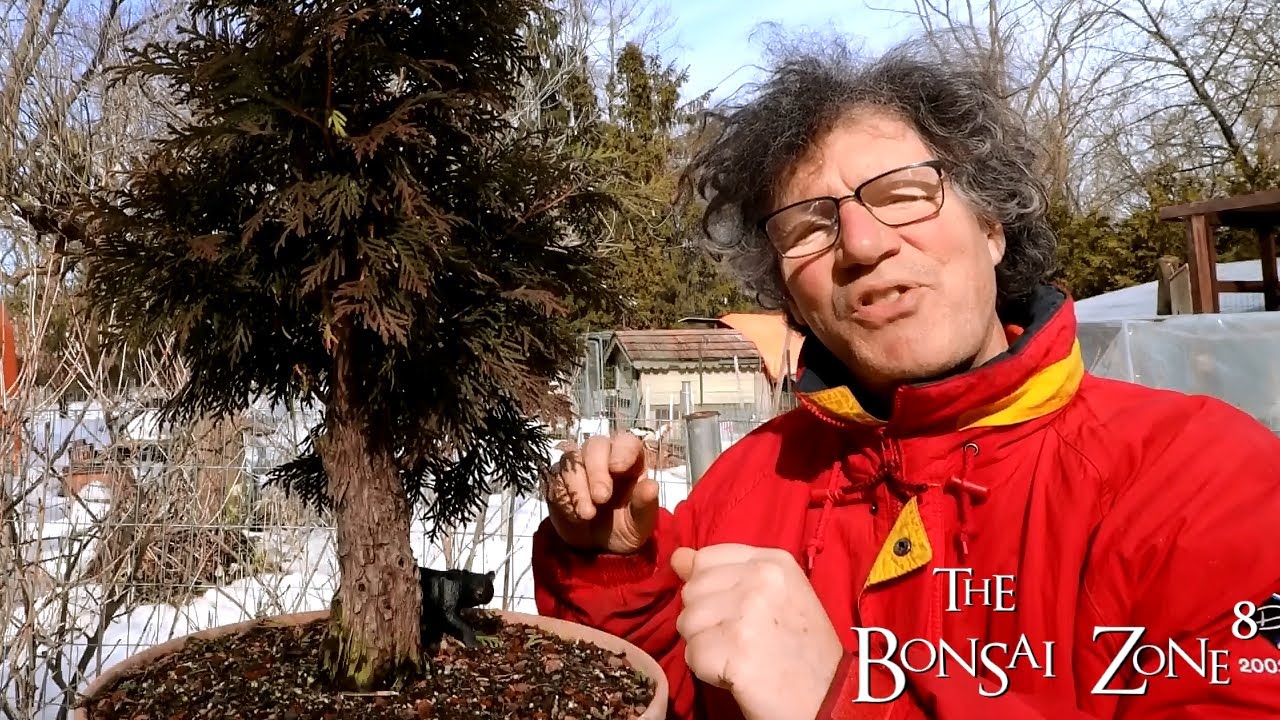In this video we’ll be getting some Bonsai inspiration from nature while on a short mountain walk.
We usually style our Bonsai trees using some well established patterns and by this I’m referring to the classic bonsai styles. But sometimes the tree has something else in mind. So when the tree wants to go another way we can either try to force a tree into matching the predefined style pattern or we can follow a more natural course that deviates from the target style. Human kind gets nature inspiration for the design of various structures and machines so getting inspiration for bonsai from nature should come as a natural approach.
I this video I go for a nature walk and look at some inspiring trees growing in nature to identify natural features that are usually used for bonsai design as well as other features that could be used for training a natural looking bonsai. We will be looking of naturally occurring representatives of several bonsai styles like the clump style (kabudachi), forest or group planting (yose-ue), raft style (ikadabuki) and a naturalistic broom style (hokidachi).
Hello everyone! It’s Stefan here, behind the camera, and in this Odd Bonsai video we’re going on a nature walk and look for Bonsai inspiration from trees growing in nature. The place I’m going to is a low mountain area which is dear to me. Taking advantage of the great spring weather we’re going for a walk along a small mountain river while keeping an eye out for inspiring trees. This is the path we’re going to follow up stream and this is the small, but noisy, mountain river that will be keeping us company. So, away we go! We make a first stop by this small waterfall (if it can even be called a waterfall). A few meters down river from the waterfall stands a nice example of a willow tree growing naturally in a clump form. One reason for the tree growing like this is if the initial trunk was snapped off at some point and then multiple trunks grew from the remaining stump. Here’s a closer look at the clump base where a big log was deposited by high flood waters. You can also see the many, partially healed, wounds on the side of the willow from repeated battering by flood debris. The root base is pretty large and seems to have developed more on the side facing away from the riverbank as though the tree is trying to hold itself from falling into the river. This kind of root asymmetry is often seen in trees growing on river banks or steep slopes. Looking at the tree structure, the five trunks have grown in a cup-like shape as each of them reached for light in another direction while most ramification occurs in the upper half of the tree. Here’s another view of the tree in which you can clearly see the debris deposited between the trunks by high flood waters. There’s even some more debris here in the background. Looking at the top of the tree we can see that some of the older branches were broken off while all remaining branches are reaching for light either toward the outside of the clump or through the empty spaces in the canopy. Further along we find a group of three walnut trees. I couldn’t say if they were planted here or if they just grew naturally. This pasture is used for grazing goats by locals from the village located less than two kilometers from here, so they might be planted by men. And this could definitely explain their equidistant placement and why they are growing in a straight line. What is very interesting is that, even though they seem to be more or less the same age, the middle tree is the taller dominant tree. So the tree tops form the usual triangle shape that we aim to achieve in group plantings. Now let’s go take a closer look at their branch structures. With the sun sitting lower in the sky than during summer the shadows cast by this walnut tree on the lush green grass are just awesome! Now looking at the branch structure, we can see several main branches growing at a steep angle from the trunk: steeper for the ones that start from higher up and less steep for the lower branches. These main branches then further subdivide into finer and finer branches reaching out for light toward the outside of the canopy. Here’s another view of the trees now with the sun behind me. Notice how the lower branches on the center tree and those of the tree on the right are growing almost horizontally. This is because growing tips on all branches are growing towards the light. Since the upper branches are blocking the light from reaching the lower part of the tree, the only option for getting more light was to grow sideways. Our next interesting subject is somewhere around there. So let’s head that way! The next specimen we can draw some inspiration from is a raft style walnut. Initially, it was probably growing vertically over here and then it fell down, maybe due to a storm. It has lost its original apex and any branches that were growing on the underside of the actual raft. The only ones that survived are the side branches that were pointing upwards when the tree fell. No new branches grew from the lower part of the main trunk and we’ll soon see why. This tree is younger in comparison to the previous walnuts and I’ll try to give you a sense of scale by getting closer to the tree. Here’s a look at the original root base of the tree. What’s interesting is how well preserved is the dead wood. There are no signs of rot, except maybe for this part here where moss is growing, but otherwise it’s in pretty good shape. It’s pretty damaged but I can’t tell if this was the reason why the tree fell down or if all the damage is more recent. It’s also showing some charring marks which may actually have helped in preserving the dead wood. Now here’s a look at the lower trunk. As you can see, there are several large scars which kind of explains why there’s no chance of new branches growing in this section of the raft. Any new shoots that would appear on this section of the trunk will soon be stepped on or sat on by passerby tourists. I noticed a bunch of bees that seem to be searching for something in this moss patch on the shady side of the walnut raft. I have no idea what they are actually looking for but it’s interesting anyway. Next up, we have a nice big alder tree that’s just coming into leaf. I just love how you can see both the tree structure and a bit of foliage during this time of the year. This alder has a nice triangular profile to it although you probably can’t really tell the outline of the canopy because of the trees growing behind it. But it’s something like this. You can also notice how side branches that are upper in the canopy grow at a steeper angle when compared to the lower branches. Let’s go in for a closer look. I love the look of these long and slender branches. There are a lot of primary branches but not that many secondary ramifications. This is for sure my favorite tree of the day! It’s a great time of the year for being outdoors and seeing nature reborn. Mother nature is a great source of inspiration for styling a bonsai tree. So go out for a trip to the mountains, a local forest or even a park and observe nature! That’s all for this video. Thank you for watching and see you in the next Odd Bonsai video!



